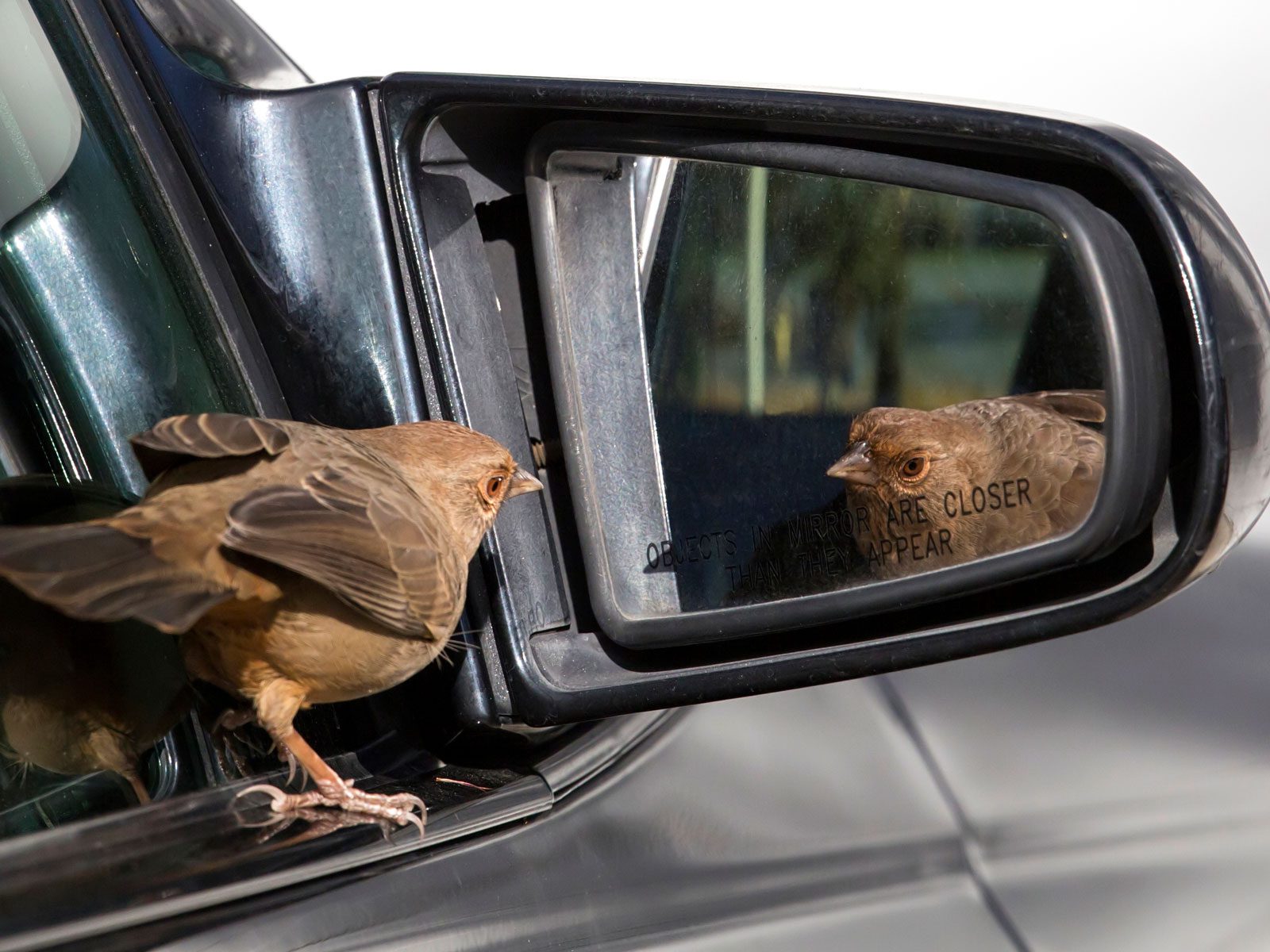

Articles
Why Do Birds Attack Car Mirrors
Modified: January 19, 2024
Discover the reasons behind birds attacking car mirrors in this informative articles. Learn about their territorial instincts and strategies to prevent mirror damage.
(Many of the links in this article redirect to a specific reviewed product. Your purchase of these products through affiliate links helps to generate commission for Storables.com, at no extra cost. Learn more)
Introduction
Bird attacks on car mirrors are a perplexing phenomenon that many drivers have experienced. It may leave you questioning why birds have such a fascination with your vehicle’s mirrors. This article aims to shed light on this intriguing behavior and explore the possible reasons behind it.
Key Takeaways:
- Understanding the reasons behind bird attacks on car mirrors, such as territorial behavior and reflection confusion, can help drivers implement effective deterrent measures and minimize potential damage to their vehicles.
- By raising awareness, promoting responsible behavior, and considering modifications to mirror design, drivers can coexist harmoniously with birds while protecting their car mirrors from aggressive encounters.
Read more: How To Stop Birds From Attacking Car Windows
Understanding the Phenomenon
There are several theories that help explain why birds attack car mirrors:
1. Instinctive Territorial Behavior
One possible reason for bird attacks on car mirrors is territorial behavior. Birds are known to fiercely defend their nesting sites and feeding areas. When they see their own reflection in the mirror, they interpret it as an intruder encroaching upon their territory. This triggers their natural instinct to defend their space and possibly attack the perceived threat.
2. Reflection Confusion
Another explanation is that birds simply get confused by their own reflection in the mirror. Birds have excellent vision and rely on visual cues for many aspects of their lives, including finding food, mates, and defending territory. When they see a reflective surface like a car mirror, they may mistake their own reflection for another bird. This confusion could lead to aggression or attempts to establish dominance.
3. Self-Perception or Competition
Some experts believe that when birds see their own reflection in a mirror, they perceive it as a competitor. This perception triggers aggressive behavior, as birds vie for resources and mates in their natural habitats. In an attempt to assert dominance, they may attack the mirror, thinking they are defending their territory or potential mates from a rival.
Understanding these underlying reasons can help us navigate this phenomenon and find ways to mitigate bird attacks on car mirrors. In the following sections, we will explore the various factors that influence these behaviors and discuss potential solutions.
Read more: How To Keep Birds Off My Car Mirrors
Instinctive Territorial Behavior
One of the primary reasons birds attack car mirrors is due to their instinctive territorial behavior. Birds are highly territorial creatures and exhibit aggressive behaviors to defend their nesting sites and feeding areas. When they encounter a reflective surface like a car mirror, they perceive their own reflection as an intruder encroaching upon their territory.
Many bird species, such as robins, cardinals, and bluebirds, are particularly prone to territorial aggression. These birds have well-defined territories and will vigorously defend them against any perceived threat. When they see their own reflection in the mirror, they interpret it as another bird trespassing in their territory. This triggers a defensive response in an attempt to protect their space.
During breeding season, territorial aggression can become more pronounced. Male birds become especially territorial as they try to attract mates and establish their breeding territories. Any perceived intruder, even if it’s just their own reflection, is seen as a potential rival that needs to be confronted and driven away.
It is important to note that not all bird species exhibit the same level of territorial behavior. Factors such as habitat, nesting habits, and social structure influence their territorial tendencies. Some birds may be more prone to attacking car mirrors, while others may simply ignore them.
To mitigate bird attacks on car mirrors due to instinctive territorial behavior, there are a few strategies that drivers can employ:
- Move the vehicle: If possible, consider parking the vehicle in a different location away from areas frequented by birds. By removing the vehicle from their perceived territory, the likelihood of attacks on car mirrors can be reduced.
- Use visual deterrents: Attach reflective tape or hang shiny objects near the mirrors to deter birds from approaching. The movement and glints of light can confuse the birds and discourage them from attacking.
- Cover the mirrors: Use covers or blankets to conceal the mirrors when the vehicle is parked for an extended period. This can help minimize the reflection that attracts birds and reduces the chances of attacks.
By understanding and addressing the instinctive territorial behavior of birds, drivers can take proactive measures to prevent attacks on their car mirrors and avoid potential damage. However, it is important to remember that birds are protected wildlife, and it is essential to respect them and their natural behaviors.
Reflection Confusion
Another factor that contributes to birds attacking car mirrors is reflection confusion. Birds rely heavily on visual cues to navigate their surroundings, find food, and interact with other birds. When they encounter a reflective surface, such as a car mirror, they may mistake their own reflection for another bird. This confusion can lead to aggressive or territorial behaviors.
Birds have excellent eyesight and can identify patterns, colors, and shapes with great precision. They use their vision to recognize potential threats, locate potential mates, and establish dominance in their social hierarchy. However, this sharp visual acuity can also work against them when they encounter reflective surfaces.
When a bird sees its reflection in a car mirror, it may interpret it as another bird intruding upon its territory. The bird sees another creature displaying territorial behavior, and this triggers its natural response to defend its space. The confusion arises because the bird does not realize that it is actually looking at its own reflection.
Reflection confusion can be more common during the breeding season when birds are more sensitive to potential rivals and intruders. They may become hyper-vigilant and responsive to any perceived threats, which includes their own reflections. This can lead to repeated attacks on car mirrors as birds try to establish dominance or drive away the perceived intruder.
To reduce bird attacks on car mirrors due to reflection confusion, there are a few strategies that can be employed:
- Use visual deterrents: Similar to instinctive territorial behavior, visual deterrents such as reflective tape or shiny objects can confuse the birds and discourage them from attacking. By altering or distorting the reflection, it becomes less likely to trigger aggressive behaviors.
- Modify the reflection: Installing objects near the mirror that create distortions or break up the reflection can help reduce confusion. These can be items like branch decals or window clings that disrupt the clear image of a bird’s reflection.
- Apply non-reflective coatings: Coating car mirrors with non-reflective films or materials can minimize the mirror’s reflective properties. This reduces the chances of birds mistaking their own reflection for another bird.
By addressing the issue of reflection confusion, drivers can effectively minimize the number of bird attacks on their car mirrors. These measures aim to break the illusion of an intruder, reducing the bird’s aggression and promoting peaceful coexistence.
Self-Perception or Competition
Another potential reason for bird attacks on car mirrors is the concept of self-perception or competition. Some experts believe that when birds see their own reflection in a mirror, they perceive it as a competitor for resources or potential mates. This perception triggers aggressive behavior as birds try to assert dominance or protect their territory.
In the wild, birds engage in fierce competition for food, nesting sites, and mates. They rely on visual displays and behavioral cues to establish their dominance and attract potential partners. When birds encounter their own reflections in car mirrors, they may interpret it as another bird encroaching upon their resources or potential mates.
This perception of competition leads to territorial aggression, as birds attempt to defend their territory from what they perceive as a rival. They may engage in aggressive displays, vocalizations, and physical attacks to establish dominance and secure their resources. The mirror becomes a symbolic representation of this competition, triggering their instinct to assert their dominance and protect their interests.
While this self-perception or competition theory is not fully proven, it offers a plausible explanation for bird attacks on car mirrors. Some factors that can influence the level of aggression include:
Species-Specific Behavior
Various bird species exhibit different levels of territorial behavior and aggression. Some species, like magpies or mockingbirds, are notoriously aggressive and may attack car mirrors more frequently. Knowing the behavior patterns of specific bird species can help in understanding their propensity for attacking car mirrors.
Read more: Why Do Mirrors Appear Silver
Breeding Season
During the breeding season, birds tend to be more territorial and protective of their resources. This heightened aggression is often driven by the desire to attract mates and guard their nesting territories. Car mirrors may attract more attacks during this time as birds perceive their own reflections as potential rivals.
Mirror Design
The design and reflective properties of car mirrors can influence birds’ response. Mirrors with a high reflectivity and clarity may elicit stronger reactions from birds, as the reflection is more distinct and realistic. Mirrors with textured or tinted surfaces may be less attractive or confusing for birds, reducing the frequency of attacks.
Environmental Factors
Factors such as the presence of other birds, availability of resources, and disturbance levels in the environment can also impact bird attacks on car mirrors. If there is already heightened competition or scarcity of resources in the area, birds may be more inclined to engage in aggressive behaviors towards their reflections.
Understanding these factors can help drivers gauge the likelihood of bird attacks on their car mirrors and take appropriate measures to mitigate them. In the next section, we will explore the impact of bird attacks on both bird populations and car owners.
Species-Specific Behavior
When it comes to bird attacks on car mirrors, the level of aggression can vary depending on the species of bird involved. Each species has its own unique behavior patterns, territorial instincts, and response to perceived threats, which can influence the frequency and intensity of attacks on car mirrors.
Some bird species are known to be more territorial and aggressive, while others may be more tolerant or disinterested in their reflections. For example, species like mockingbirds, magpies, and certain raptors are known for their aggressive behaviors and may be more likely to attack car mirrors. These birds have well-established territories and vigorously defend them against potential intruders, including their own reflections.
On the other hand, there are bird species that are less prone to attacking car mirrors. For example, robins, bluebirds, and many species of waterfowl are generally less territorial and may not view their reflections as a threat. These birds are more focused on finding food, raising their young, or navigating their natural habitats, rather than engaging in territorial disputes with their reflections.
It’s important to note that not all birds within a species exhibit the same level of aggression. Individual variation among birds can also influence their behavior towards car mirrors. While one bird may aggressively attack its reflection, another bird of the same species may simply ignore it or respond with curiosity.
Drivers who frequently encounter bird attacks on car mirrors can benefit from understanding the behavior patterns of the birds in their area. Observing the species of birds involved and their territorial tendencies can provide insight into the likelihood of future attacks. This knowledge can help drivers anticipate and take preventative measures to avoid damage to their car mirrors.
To discourage bird attacks on car mirrors based on species-specific behavior, consider the following strategies:
- Research local bird species: Learn about the bird species in your area and their behavior patterns. This information can help you understand which birds are more likely to attack car mirrors and take appropriate precautions.
- Modify environment: If specific bird species are causing frequent attacks on your car mirrors, consider modifying the environment to make it less attractive to them. Removing or relocating potential nesting sites, bird feeders, or other bird attractants can reduce their territorial aggression.
- Use bird deterrents: Install bird deterrent devices or visual cues near car mirrors to discourage birds from approaching. These can include motion-activated lights, reflective objects, or scare-eye balloons. However, ensure that these deterrents are humane and compliant with local regulations regarding bird protection.
- Cover the mirrors: When your car is parked for an extended period, consider covering the mirrors with a protective material to minimize the reflection that may attract birds. Just be sure to uncover them before driving.
By understanding how species-specific behaviors influence bird attacks on car mirrors, drivers can implement appropriate strategies to minimize the occurrences and protect their vehicle’s mirrors.
Read more: Why Do Bars Have Mirrors
Breeding Season
The breeding season plays a significant role in bird behavior and can have a direct impact on the frequency and intensity of bird attacks on car mirrors. During this season, birds become more territorial and protective of their nesting territories, mates, and offspring. This heightened aggression can lead to increased attacks on car mirrors.
For many bird species, the breeding season is a critical time when they seek to attract mates and secure suitable nesting sites. Male birds often display elaborate courtship behaviors and engage in aggressive interactions with other males to establish dominance and defend their territories. When birds encounter their own reflections in car mirrors, they may perceive it as a potential rival intruding on their territory or competing for mates.
Males of certain bird species, such as cardinals, bluebirds, and robins, are particularly notorious for their territorial aggression during the breeding season. They vigorously defend their nesting areas and may view their own reflections as threats to their mating success. This can lead to incessant attacks on car mirrors as they attempt to assert their dominance and protect their territories.
Additionally, the presence of a potential mate can further heighten birds’ territorial behavior. When male birds see their reflections, they may interpret them as possible competitors for the attention of a female bird in the vicinity. This perceived competition for mates triggers even more aggression and can result in repeated attacks on car mirrors.
To mitigate bird attacks on car mirrors during the breeding season, consider the following strategies:
- Be aware of breeding periods: Research the breeding seasons of local bird species and be prepared for increased territorial aggression during these times. This knowledge can help you anticipate and take preventative measures to protect car mirrors.
- Keep a safe distance: If you notice bird aggression towards your car mirrors during the breeding season, try to park your vehicle away from established nesting territories. Giving birds enough space can help alleviate their perceived threat and reduce the likelihood of attacks.
- Use visual deterrents: Implement visual deterrents near car mirrors, such as reflective tape or shiny objects, to confuse and discourage birds from approaching. The movement and flashes of light can disrupt their aggressive behaviors.
- Consider alternative parking: If possible, park your car in an area where bird activity is minimal or where car mirrors are less likely to attract attention during the breeding season. This may help reduce the chances of bird attacks.
By acknowledging the influence of the breeding season on bird behavior, drivers can take proactive steps to minimize the risk of bird attacks on car mirrors and protect their vehicles during this critical time for bird reproduction.
Mirror Design
The design of car mirrors can also play a role in influencing bird attacks. Different mirror designs and features can elicit varied responses from birds, affecting their likelihood of attacking car mirrors.
One factor to consider is the mirror’s reflectivity. Highly reflective mirrors may appear more realistic to birds, making them more likely to perceive their own reflections as intrusions into their territory. These mirrors can amplify the aggression and territorial behavior of certain bird species. On the other hand, mirrors with lower reflectivity or textured surfaces may be less attractive to birds, reducing the chances of attacks.
The shape and size of car mirrors can also impact bird behavior. Larger mirrors tend to offer more reflective surface area, which may be more enticing to birds. They provide a larger canvas for birds to see their reflections and can intensify their territorial response. Conversely, smaller mirrors may have a reduced impact as the reflection may appear less threatening or intriguing to birds.
Some car manufacturers have started incorporating features to address the issue of bird attacks on mirrors. For example, some mirrors have integrated LED turn signals or specific design elements that break up the reflection. These modifications can help reduce the attractiveness of the mirror to birds, decreasing the frequency of attacks.
While modifying the design of car mirrors may not always be feasible, there are additional steps that can be taken to minimize bird attacks:
- Apply decals or window clings: Placing decals or window clings on the car mirror’s surface can help break up the reflection and make it less appealing to birds. These can be in the form of bird-shaped decals or even simple patterns that create visual disruptions.
- Add non-reflective coatings: Applying non-reflective coatings or films to the mirror’s surface can help reduce its reflectivity and make it less attractive to birds. These coatings can minimize bird attacks by making the mirror less reflective or by distorting the reflection.
- Consider mirror caps or covers: Covering the mirror with caps or covers when the car is parked can provide an added layer of protection. These covers can help reduce the likelihood of birds attacking the mirror and potentially causing damage.
By considering the design elements of car mirrors and implementing appropriate modifications or coverings, drivers can minimize the attractiveness of mirrors to birds, reducing the occurrences of bird attacks and potential damage to their vehicle’s mirrors.
Environmental Factors
Several environmental factors can influence bird attacks on car mirrors, including the presence of other birds, availability of resources, and disturbance levels in the surrounding area. These factors, in turn, have an impact both on bird populations and car owners.
Presence of Other Birds
The presence of other birds in the vicinity can trigger territorial responses and aggression. If there is already an established bird population in the area, it increases the likelihood of bird attacks on car mirrors. Birds may feel the need to defend their territories more aggressively, leading to frequent attacks on reflective surfaces like car mirrors. The more birds there are in the area, the higher the chances of encounters and potential damage to car mirrors.
Read more: Why Do Babies Like Mirrors
Availability of Resources
The availability of food sources and nesting sites can also influence bird behavior. If there is a limited supply of resources, such as food or suitable nesting locations, birds may become more aggressive in protecting these resources. In such cases, car mirrors may be perceived as potential competitors for scarce resources, triggering attacks. Areas with rich bird habitats may experience higher levels of bird attacks due to increased competition for resources.
Disturbance Levels
The overall level of disturbance in the environment can impact bird behavior. If there are frequent disturbances, such as loud noises or constant human activity, birds may become more stressed and aggressive in response. This heightened level of stress can amplify their territorial instincts, leading to more frequent attacks on car mirrors or other reflective surfaces. Areas with high levels of disturbance may experience higher rates of bird attacks on car mirrors.
The impact of bird attacks on both bird populations and car owners can be significant:
Stress and Injuries to Birds
Repeated attacks on car mirrors can cause stress and potential injuries to the birds themselves. Aggressive behaviors can result in collisions with the mirror or nearby objects, leading to physical harm. Additionally, the energy expended on attacking car mirrors detracts from other essential activities, such as foraging or caring for their young. Stress and injuries can impact bird populations and their overall well-being.
Damage to Car Mirrors
For car owners, bird attacks on car mirrors can result in varying degrees of damage. Scratches, chips, or even shattered mirror glass can be the outcome of these aggressive encounters. Repairing or replacing damaged car mirrors can be costly and inconvenient. Furthermore, the presence of bird droppings on the mirror can also degrade its appearance and impair visibility for the driver.
Read more: Why Do Cats Scratch On Mirrors
Potential Risks for Drivers
While bird attacks on car mirrors may seem harmless, they can become a distraction for drivers and potentially lead to accidents. Sudden bird attacks can startle the driver, divert their attention, or obstruct their view. These brief moments of distraction can have serious consequences, particularly when driving at higher speeds or in heavy traffic. Minimizing bird attacks on car mirrors can help improve driver safety.
Understanding the impact of environmental factors on bird attacks can assist both bird conservation efforts and car owners in mitigating the risks associated with these encounters. By implementing strategies to reduce disturbance levels, providing alternative resources for birds, and taking preventative measures to protect car mirrors, the negative impacts on both bird populations and car owners can be minimized.
Stress and Injuries to Birds
Bird attacks on car mirrors can result in significant stress and potential injuries to the birds themselves. While these encounters may seem harmless, they can have detrimental effects on the well-being of the birds involved.
Aggressive behaviors exhibited during bird attacks on car mirrors can lead to collisions with the mirror or surrounding objects, causing physical harm to the birds. These collisions can result in injuries such as broken wings, beak damage, or abrasions. In severe cases, such injuries can impede a bird’s ability to fly, forage, or care for their young, making them more vulnerable to predation and reducing their chances of survival.
Repeated attacks on car mirrors can also lead to chronic stress in birds. The constant aggression and territorial confrontations drain their energy and divert their focus away from essential activities such as foraging or protecting their nesting sites. Elevated stress levels can have negative impacts on their overall health, immune functioning, and reproductive success.
Additionally, bird attacks on car mirrors can disrupt their natural behavior patterns. Birds may become fixated on the perceived intruder in the mirror, leading to a heightened state of vigilance and aggression. This redirection of their attention and energy can hinder their ability to engage in necessary activities for survival and reproductive success.
It’s important to recognize that birds are protected wildlife, and their well-being should be prioritized. To mitigate stress and injuries to birds caused by attacks on car mirrors, consider the following measures:
- Alter the environment: If bird attacks on car mirrors are frequent in a particular area, consider altering the environment to minimize their confrontations. This can involve removing potential nesting sites or food sources near parking areas, discouraging bird congregation and territorial conflicts.
- Educate and raise awareness: Promote education and awareness initiatives to inform the public about the potential impacts of bird attacks on car mirrors and encourage responsible behavior. By fostering an understanding of bird behavior and the need to protect their well-being, drivers can make conscious efforts to minimize the likelihood of attacks.
- Implement preventative measures: Employ deterrents such as reflective tape, shiny objects, or non-reflective coatings on car mirrors to discourage bird attacks. These measures can help reduce the likelihood of confrontations and minimize stress for both birds and car owners.
- Support bird conservation efforts: Donate to or volunteer with local bird conservation organizations that work towards protecting bird populations and their habitats. These efforts contribute to the overall conservation of bird species, reducing stressors previously mentioned.
By considering the well-being of birds and taking steps to minimize stress and injuries resulting from bird attacks on car mirrors, we can coexist harmoniously with these fascinating creatures and ensure their continued survival in our shared environment.
Damage to Car Mirrors
Bird attacks on car mirrors can result in varying degrees of damage to the mirrors themselves. These encounters can leave car owners with unsightly scratches, chips, or even shattered glass. Furthermore, the presence of bird droppings on the mirror surface can further degrade its appearance and impair visibility for the driver.
The aggressive behaviors exhibited by birds during attacks can cause scratches or scuff marks on the mirror’s surface. Birds often use their beaks or claws to defend against what they perceive as intruders, leaving behind visible damage. In some cases, the intensity of the attacks can lead to more severe damage, such as cracks or even the complete breakage of the mirror glass.
The constant barrage of bird attacks can also result in accumulated damage over time. Each attack adds to the wear and tear on the mirror, compromising its functionality and aesthetics. This can be particularly frustrating for car owners who take pride in the appearance and maintenance of their vehicles.
Not only does the damage impact the visual appeal of the car, but it can also lead to additional costs for repairs or replacements. Depending on the extent of the damage, car mirror repairs or replacements can be both time-consuming and expensive.
However, it’s important to act responsibly when dealing with damaged car mirrors caused by bird attacks. Consider the following measures to address and minimize the damage:
- Repair or replace: Assess the extent of the damage to the car mirror and determine if it requires professional repair or replacement. Engage with reliable auto repair services that specialize in mirror repairs to ensure the best possible outcome.
- Regular cleaning: Clean bird droppings off car mirrors promptly to prevent any potential damage, as bird droppings contain corrosive elements that can harm the mirror’s surface. Use appropriate cleaning solutions and techniques to avoid further scratching the mirror.
- Bird repellents: Apply bird repellent gels, sprays, or tapes to deter birds from landing or perching on car mirrors. These repellents create an unpleasant or uncomfortable surface for the birds, minimizing the likelihood of further attacks and potential damage.
- Protective covers: Consider using protective covers or sleeves specifically designed for car mirrors to shield them from bird attacks. These covers can act as a physical barrier, mitigating the risk of scratches or other damage during bird encounters.
By promptly addressing the damage caused by bird attacks on car mirrors and taking preventative measures, car owners can maintain the integrity and appearance of their vehicle’s mirrors and avoid unnecessary expenses.
Potential Risks for Drivers
While bird attacks on car mirrors may seem like a minor inconvenience, they can pose potential risks for drivers. Sudden bird attacks can startle the driver, divert their attention, or obstruct their view, creating dangerous situations on the road. It’s crucial to mitigate these risks to ensure driver safety.
When a bird suddenly attacks a car mirror, it can startle the driver and cause a momentary distraction. This distraction can lead to a loss of concentration and slower reaction times, increasing the risk of accidents. In high-speed or congested traffic situations, even a brief lapse in attention can have serious consequences.
Additionally, the movement and commotion caused by bird attacks may obstruct the driver’s view. If a driver is focusing on the bird or trying to navigate away from the attack, their line of sight toward other vehicles or pedestrians may be compromised. Limited visibility increases the likelihood of collisions or near-miss incidents.
To mitigate the potential risks associated with bird attacks on car mirrors, consider the following strategies:
- Stay calm and focused: If a bird attack occurs while driving, it’s important to remain calm and avoid sudden or aggressive maneuvers. Stay focused on maintaining control of the vehicle and safely regaining your attention on the road.
- Keep a safe distance: Maintain a safe following distance from the vehicle ahead to ensure adequate reaction time in case sudden movements are required during a bird attack. This can help prevent rear-end collisions and provide a buffer zone for unexpected distractions.
- Minimize distractions: Avoid unnecessary distractions within the car, such as eating, using mobile devices, or engaging in intense conversations. By reducing distractions, you can better concentrate on the road and be prepared for any bird-related incidents.
- Not interrupting bird behavior: In some cases, attempting to scare or shoo away the attacking bird may exacerbate the situation. It is often best to allow the bird to finish its aggression and then proceed with caution.
- Consider alternative routes or parking: If a particular route or parking area is known for frequent bird attacks, it may be worth choosing alternative options to minimize the risk. Opting for less bird-populated areas can help reduce the chances of engagements with aggressive birds.
By being aware of the potential risks associated with bird attacks on car mirrors and implementing these mitigation strategies, drivers can help ensure their own safety and the safety of others on the road.
Read more: Why Do Mirrors Get Black Spots
Deterrent Measures
Deterrent measures are an effective way to mitigate bird attacks on car mirrors and discourage birds from approaching or causing damage. By implementing various deterrent strategies, drivers can minimize the likelihood of bird encounters and protect their car mirrors. Here are some effective measures to consider:
Visual Deterrents
Visual deterrents make use of reflective or shiny objects to confuse and deter birds from approaching car mirrors. These deterrents create an ever-changing and unpredictable visual display that birds find unsettling. Examples of visual deterrents include:
- Reflective tape: Attach strips of reflective tape to the top and sides of the car mirrors. The movement and glints of light from the tape can confuse and startle birds, discouraging them from approaching.
- CDs or shiny objects: Hang CDs, aluminum foil strips, or other shiny objects near the car mirrors. The random reflections and flashes of light can disorient birds and deter them from attacking.
- Scare-eye balloons: Inflate and place scare-eye balloons near the car mirrors. These balloons have large, menacing eyes that mimic the presence of predators and can intimidate birds, leading them to stay away.
Noise Deterrents
Noise deterrents can startle and ward off birds from car mirrors by creating unexpected sounds or disturbances. These deterrents disrupt the birds’ behavior and make the immediate area less appealing to them. Examples of noise deterrents include:
- Wind chimes: Hang wind chimes in close proximity to the car mirrors. The tinkling sounds produced by the chimes can deter birds and interfere with their territorial behavior.
- Ultrasonic devices: Install ultrasonic devices designed to emit high-frequency sounds that are bothersome to birds. These devices are inaudible to humans but can create an uncomfortable environment for birds.
- Motion-activated noise makers: Place motion-activated noise makers near the car mirrors. These devices emit sudden loud sounds or frightening noises when birds approach, startling them and deterring further aggression.
Scents and Taste Deterrents
Some scents or taste deterrents can repel birds and discourage them from approaching car mirrors. These deterrents create an unpleasant environment that birds prefer to avoid. Examples of scents and taste deterrents include:
- Pepper or chili powder: Sprinkle pepper or chili powder near the car mirrors. The strong odor and taste are unappealing to birds and can act as a deterrent.
- Essential oils: Apply diluted essential oils such as peppermint, eucalyptus, or citrus near the car mirrors. Birds find certain scents overwhelming and will likely avoid the area.
- Vinegar solution: Spray a vinegar solution onto the car mirrors. The strong smell disrupts birds’ sensory perception, making them less likely to target the mirrors.
When implementing deterrent measures, ensure that they comply with local regulations and are safe for both birds and humans. It’s important to remember that birds are protected wildlife, and any deterrent methods should be humane and non-harmful.
By employing a combination of visual, noise, and scent deterrents, drivers can create an environment that birds find uninviting, reducing the frequency of bird attacks on car mirrors and protecting their vehicles.
Read more: How To Wrap Car Mirrors
Modifying Mirror Design
Modifying the design of car mirrors can be an effective way to mitigate bird attacks and minimize the attractiveness of mirrors to birds. While not always feasible for every vehicle, there are several modifications that can be considered to make car mirrors less enticing to birds. These modifications aim to disrupt reflections and create a less appealing environment for potential attacks. Here are some strategies to modify mirror design:
Decals or Window Clings
Applying decals or window clings to the surface of car mirrors can help break up reflections and make them less attractive to birds. These decals can be in the form of bird shapes, patterns, or other designs that are visually disruptive. When birds encounter these altered reflections, they may be less likely to perceive them as competitors or threats.
Textured or Tinted Mirror Surfaces
Replacing conventional mirror surfaces with textured or tinted alternatives can help reduce the clarity of reflections and make them less appealing to birds. Textured surfaces can scatter the reflection, making it less recognizable and realistic to birds. Tinted surfaces can reduce the brightness and intensity of the reflection, making it less attractive and less likely to elicit aggressive responses.
Integrated Blinking Lights
Some car mirrors are designed with integrated blinking lights, often used as turn signals. Birds may be deterred by the sudden changes in light patterns, making them less inclined to approach or attack the mirrors. These blinking lights can disrupt the reflection and create an unappealing visual signal for birds.
Mirror Caps or Covers
Using mirror caps or covers specifically designed for car mirrors can provide a physical barrier and protect the mirrors from bird attacks. These covers can be made from materials that are unattractive to birds or have patterns and textures that discourage their presence. Mirror covers can be easily attached and removed when needed, providing convenience and protection as required.
When considering modifying the mirror design, it is essential to ensure that any changes comply with local regulations and do not compromise the functionality or safety of the mirrors. Any modifications should not obstruct the driver’s view or impede the functioning of integrated features such as turn signals or blind-spot detection systems.
While modifying mirror design may not be suitable for all vehicles or mirrors, drivers can explore the available options and discuss them with professionals who specialize in mirror customization or replacement. By implementing these modifications, drivers can make their car mirrors less attractive to birds, reducing the likelihood of attacks and potential damage.
Raising Awareness and Education
Raising awareness and education about bird attacks on car mirrors is a crucial step in mitigating the problem and promoting harmonious coexistence between birds and car owners. By increasing understanding of the reasons behind bird attacks and providing information on effective strategies, drivers can take proactive measures to minimize the occurrences and protect their car mirrors. Here are some ways to raise awareness and educate others:
Sharing Information
Sharing information through various channels, such as social media, local community groups, or online forums, can help spread awareness about bird attacks on car mirrors. Provide details about the reasons behind the behavior, the impact on both birds and car owners, and the potential measures to mitigate the problem. By creating a dialogue and sharing personal experiences, people can learn from one another and take appropriate actions.
Collaboration with Conservation Organizations
Collaborating with bird conservation organizations can yield valuable insights and resources. By partnering with local wildlife centers, ornithological societies, or environmental groups, drivers can gain access to expert advice and educational materials. Workshops, presentations, or events focused on bird behavior and conservation can help raise awareness among the community and empower individuals to take responsible actions.
Read more: Why Do Fruit Flies Like Mirrors
Driver Education Programs
Including bird-related topics within driver education programs can help drivers understand the potential risks and responsibilities associated with bird attacks on car mirrors. Educators and driving instructors can incorporate information on bird behavior, appropriate responses during bird encounters, and preventive measures into the curriculum. By integrating this knowledge from the outset, new drivers can develop safer driving habits when encountering bird-related distractions.
Responsible Behavior
Encouraging responsible behavior among drivers is essential. Emphasize the importance of being aware of bird habitats, respecting protected wildlife, and minimizing disturbances in natural environments. Discourage aggressive actions towards birds and promote a mindset that values the preservation of bird populations. Encouraging drivers to take preventive measures, such as using deterrent methods or modifying mirror designs, can contribute to the overall reduction of bird attacks on car mirrors.
Conclusion
Bird attacks on car mirrors can be a frustrating and potentially costly issue for car owners. However, by understanding the reasons behind these attacks and implementing appropriate measures, drivers can minimize the likelihood of encounters and protect their car mirrors. Strategies such as using deterrent measures, modifying mirror design, raising awareness, and promoting responsible behavior are all valuable tools in mitigating bird attacks.
Ultimately, a harmonious coexistence between birds and car owners is possible. By fostering a greater understanding of bird behavior and encouraging empathy towards these creatures, we can work towards maintaining the beauty of our natural environment while preserving the functionality and aesthetic appeal of our vehicles.
Remember, the well-being of birds and the conservation of their populations are just as important as safeguarding our car mirrors. By taking proactive steps and spreading awareness, we can create a safer and more harmonious environment for both birds and humans alike.
Frequently Asked Questions about Why Do Birds Attack Car Mirrors
Was this page helpful?
At Storables.com, we guarantee accurate and reliable information. Our content, validated by Expert Board Contributors, is crafted following stringent Editorial Policies. We're committed to providing you with well-researched, expert-backed insights for all your informational needs.
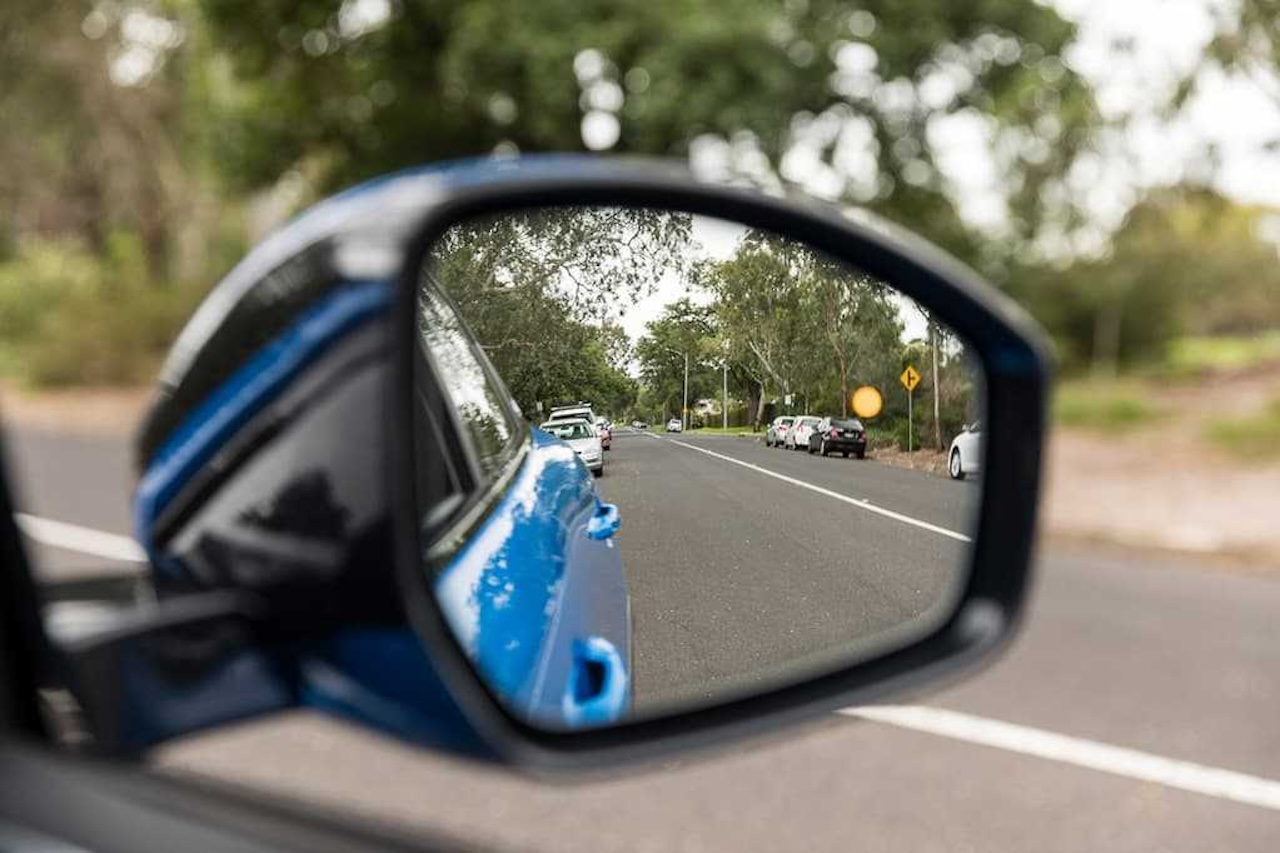
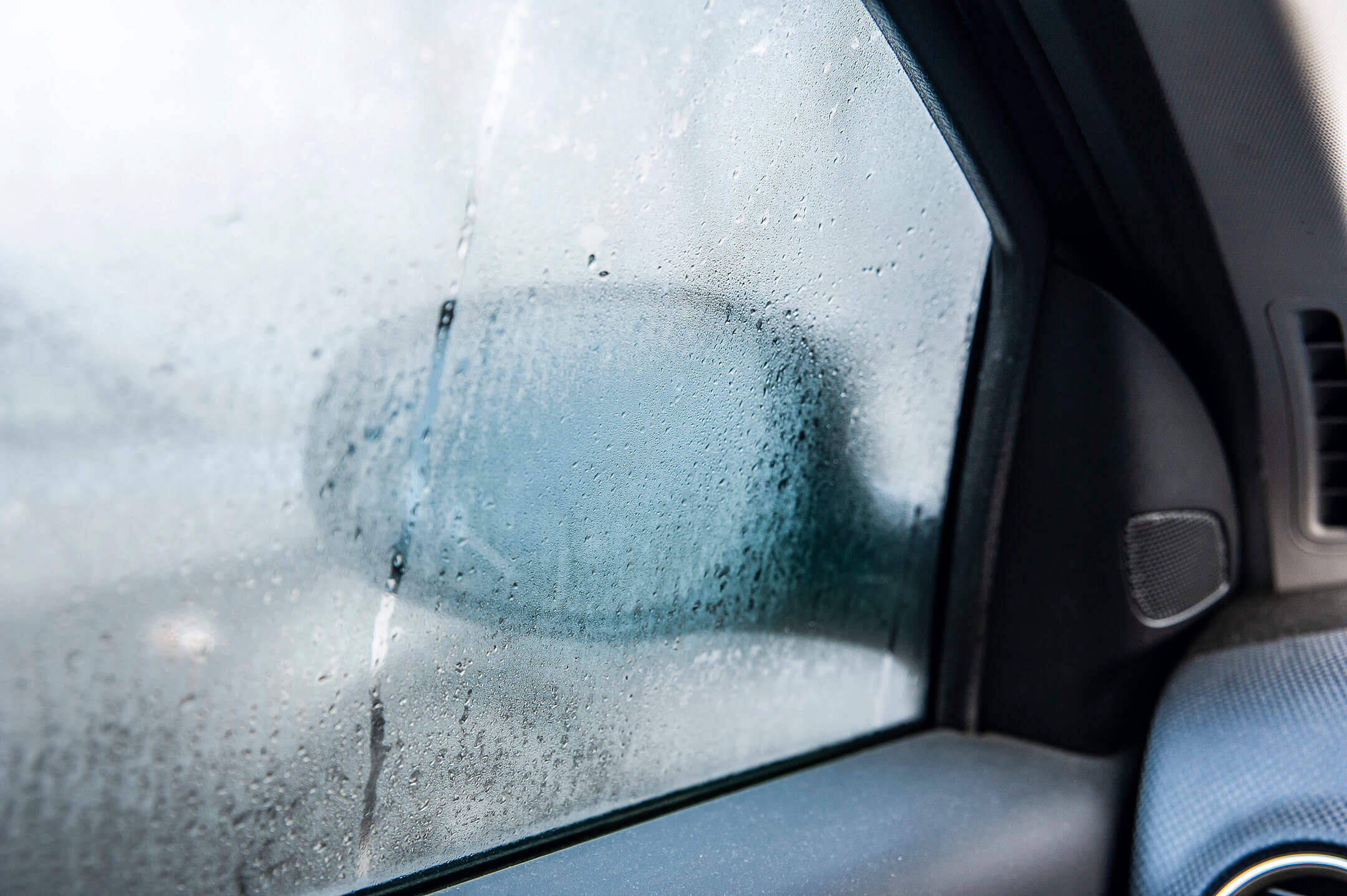


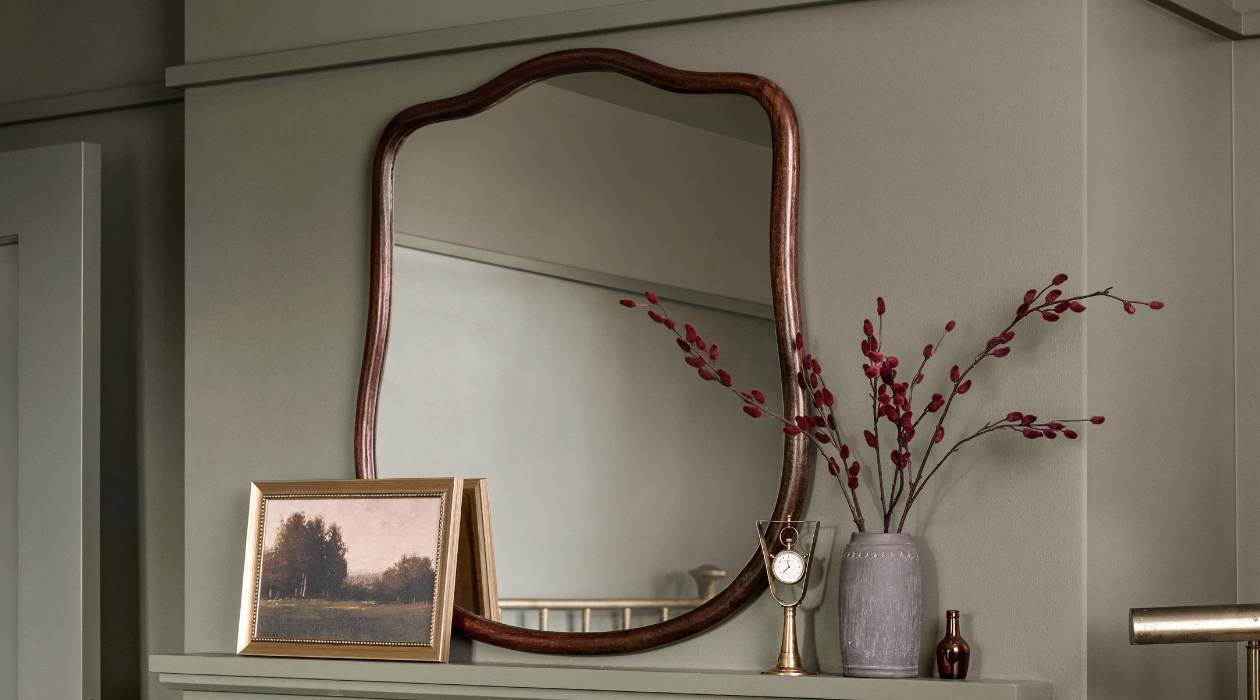
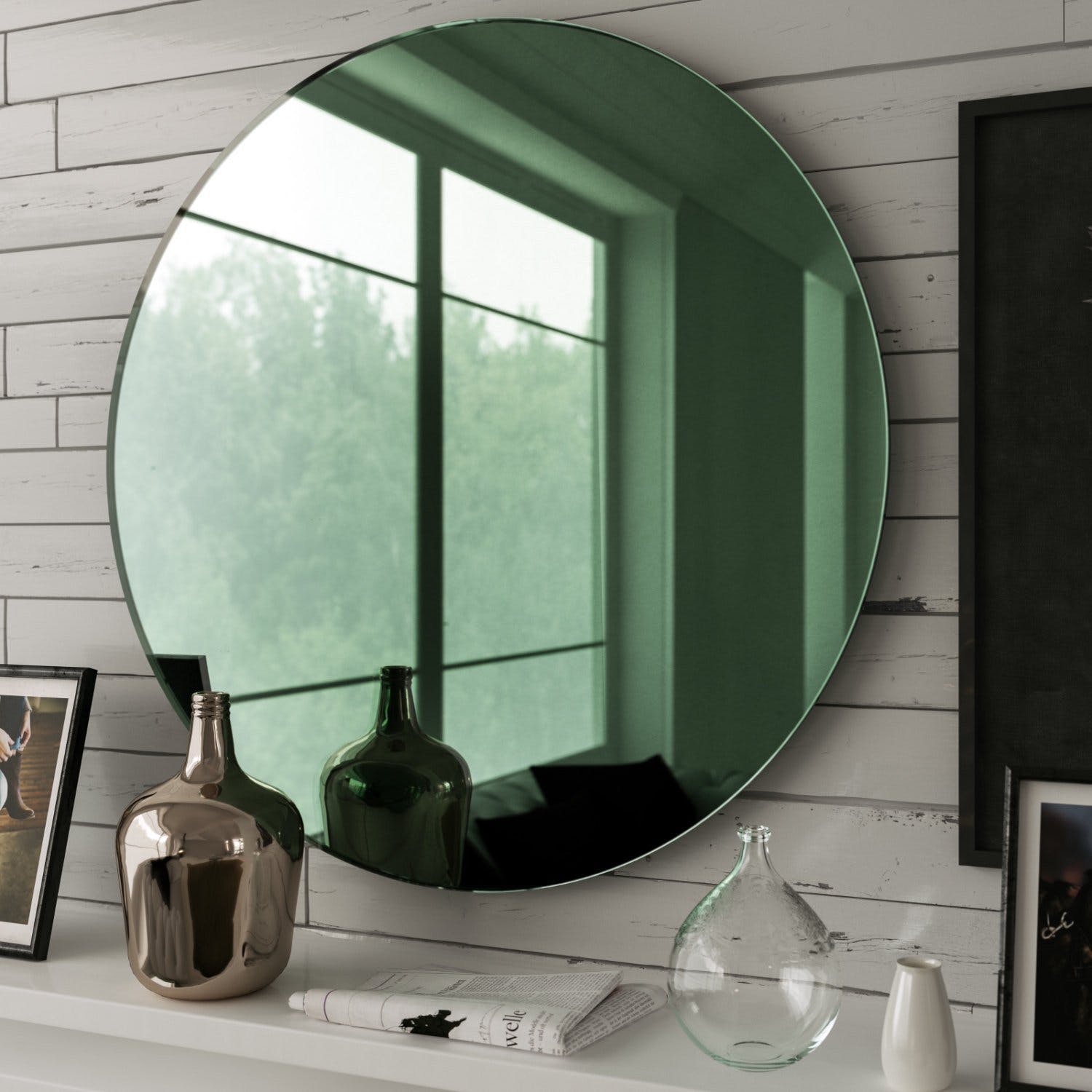

0 thoughts on “Why Do Birds Attack Car Mirrors”